Jaw Shaping in South Korea
Search and Compare the Best Clinics and Doctors at the Lowest Prices for Jaw Shaping in South Korea

Find the best clinics for Jaw Shaping in South Korea
With Medijump you can browse 13 facilities offering Jaw Shaping procedures in South Korea. The cheapest price available is $3,745 in Seoul. And for the cheapest price globally, prices start from $672 in Malaysia.
Jaw Shaping in Seoul
Price: $ 3,745
Jaw Shaping in Daejeon
Price: $ 7,892
Malaysia offers the best prices Worldwide
Price: $ 672
From 8 verified reviews
Lucy Thornton, 31 August 2020
I would highly recommend Nana Plastic Surgery Clinic. I had a full mommy makeover and Dr Hwang did a great job! The language barrier was never a problem thanks to the amazing English consultant Kylie. She has put in hours helping me …
From 2 verified reviews
윤요미, 01 January 2020
Very kind and nice
From 2 verified reviews
Patcha Ying Ying, 17 December 2020
I travel from Thailand to have bigger breasts and I glad to come here. More expensive than Thailand, but I not trust doctor here so much as korean
From 1 verified reviews
HARRY CHO, 16 March 2019
This hospital is wonderful hospital! Staffs are kind. Doctors are proficient! Price is reasonable!
From 1 verified reviews
Jui , 01 February 2020
Professional and diligent throughout the whole process. Many many thanks to all involved, including MyMedi
From 15 verified reviews
yully, 22 November 2019
It was good to have a consultation with the director who specializes in surgery surgery. The results are also satisfactory!
From 15 verified reviews
sasha naicker, 19 February 2020
I did Rhinoplasty, ear surgery and lower blepharoplasty at BK, staff are very friendly and spoke English.
From 98 verified reviews
cc a, 04 July 2020
Heart here6 months passed, very pleasant to the touch and shapeIsn't it famous for my heart?There is also a person who is in charge of post-management care alone.It is recommended if there is a person around the kindness
From 3 verified reviews
이정덕, 23 February 2020
The nurse and doctor are very kind.
From 63 verified reviews
Nadia Fang, 30 August 2020
Dr. Kim at dermatology does her job!! Was there for acne scar treatment a while ago and now I go time to time when I feel it's necessary. She speaks good English and all staffs are very friendly. Highly recommended.
From 18 verified reviews
꿈돌이, 27 February 2020
Youth ophthalmology is highly recommended.
From 3 verified reviews
Hyeyoung Kwon, 22 August 2016
Facial treatment center is good
Severance Hospital, located in Dogok dong, Seoul, South Korea offers patients Jaw Shaping procedures among its total of 82 available procedures, across 19 different specialties. The cost of a Jaw Shaping procedure ranges from $7,892 to $12,110, whilst the national average price is approximately $7,431. There is currently a lack of information available on the specialists practicing at the Hospital, and they are accredited by JCI Accredited
- Home
- South Korea
Compare Before & After Photos of _procedure_photos.phpJaw Shaping
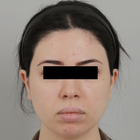
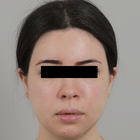
Front view

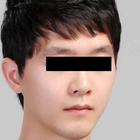
Front view
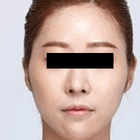
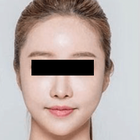
Front view
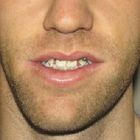

Front view
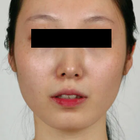
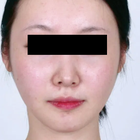
Front view
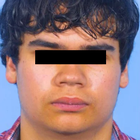
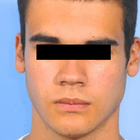
Front view

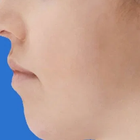
Full-side view
WHY US?
At Medijump, we're making medical easy. You can search, compare, discuss, and book your medical all in one place. We open the door to the best medical providers worldwide, saving you time and energy along the way, and it's all for FREE, no hidden fees, and no price markups guaranteed. So what are you waiting for?

Free

Best Price

Widest Selection

Risk-Free
What you need to know about Jaw Shaping in South Korea
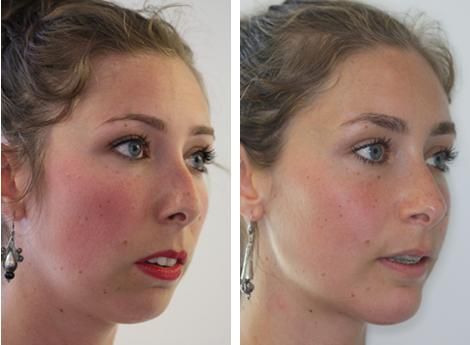
Also known as Mandibular Angle Reduction, V Line Surgery or Jawline Surgery, Jaw Shaping Surgery is performed with the purpose of narrowing the lower part of the face, with particular emphasis on the mandible (lower jaw) and the muscular attachments.
A wide jaw angle can be caused by enlarged muscle, bone, or a combination of the two. A prominent jaw angle or square jaw is considered a masculine trait, particularly in Asian countries. Therefore, many people opt for surgical correction to get their desired look. The surgery can shorten an overly long jaw and change a square-shaped face to an oval shape. Some people with temporomandibular joint (TMJ) disorders, uneven jaws, or jaws that causes pain when chewing might also undergo this surgery to correct pain.
There are several critical elements involved in the surgery, including the angles of the jaw, the body of the mandible, and the shape of the chin. While the procedure is typically performed on women with a square jawline who want a more feminine look, it can be done on both men and women. However, this procedure may not work for people who want to feminize a male’s face since males usually have a taller and longer face. Therefore, a V Line Surgery would only make a face look more elongated.
What does a Jaw Shaping Procedure Involve?
Various developmental, congenital, or some rare disorders such as acromegaly can cause enlarged mandibles, which can be corrected by Jawline Surgery. It is ideal for those with overly square or U-shaped jawline, overly manly jaw shape, bloated cheeks, and double chin. If you are considering V line surgery, you will need to be in a good state of physical and mental health.
Prior to the surgery, you will be examined by X-rays and 3D CT scans. Your surgeon will analyze and evaluate the overall structure of your jaw to create a plan to produce the desired result. You will also need to undergo medical tests such as ECGs to ensure that you don’t have a condition that may put you in danger or compromise the success of the surgery.
Surgery is performed under general anesthetic through tracheal intubation and leaves minimal scarring. You will need to fast for 8 hours before the surgery. Oscillating saws are used to reshape the jaw. The surgery can be performed inside the mouth (intraoral) or from outside the mouth (postauricular). The intraoral approach is the most widely used method. With this approach, an incision is made between the gum and the back of the cheek next to the jaw. Then, the jawline is carved out into their desired shape. A portion of the masseter muscle is shaved off, and the outer portion of the bone is chipped off. This approach is best for patients who aim to narrow their frontal view since the change is subtle and natural.
If the patient wants to change the appearance of the jaw angle from a side view, the overall contour of the bone will need to be changed. This means that the patient needs a full-thickness bone removal. Although it can be done through the intraoral approach, the surgeon’s view during this approach is very limited, which can decrease the precision of the procedure. Therefore, the best approach is from outside of the mouth or postauricular. To get direct access to the bone, the surgeon makes an incision hidden around the ear. This approach can remove a more substantial amount of bone. The recovery time using this approach is also much shorter than the intraoral approach since the swelling stays confined to the neck area.
How Long Should I Stay in South Korea for a Jaw Shaping Procedure?
The typical length of time for Jaw Shaping is usually around 2 hours. Nevertheless, you have to stay in the hospital for around one to two days for initial recovery where you will be monitored to make sure everything is fine. After being discharged, plan to stay in the South Korea for 10 to 14 days or until the surgeon says you can go home. The stitches are generally removed within two weeks after surgery, though this may vary from patient to patient.
What's the Recovery Time for Jaw Shaping Procedures in South Korea?
Immediately after the surgery, you will need to wear a facial mask that presses tightly against the skin around the jaw to keep the post-surgery swelling down. Also, you will not be allowed to eat foods that require chewing because it will delay the recovery and can cause bleeding. If you undergo the intraoral approach, your food intake will be limited for a considerable length of time. You may feel some swelling, numbness, and discomfort around the incision for several days, but the surgeon will prescribe medications to help with the pain.
The recovery period can be different for each individual; some people may be able to go back to their regular routines after seven to ten days, but others may need more time to fully recover. Avoid doing any vigorous activity that increases your blood pressure for several weeks, such as jogging and other exercises. Most of the visible signs, such as swelling and bruising, should disappear within a few weeks. Symptoms such as hematoma and infection are common, and will usually subside within three to six months post-surgery.
What sort of Aftercare is Required for Jaw Shaping Procedures in South Korea?
You must follow your surgeon aftercare instructions strictly to accelerate your recovery and minimalize possible complications. The instruction will likely include the following recommendations:
- Food intake. You may need to consume a liquid diet for a week after surgery as drinking your food is less painful and prevents trauma to the jaw area. You should be able to consume hard foods within one month.
- Oral hygiene. An antibacterial mouth rinse will keep your mouth and incision area clean, which will decrease the possibility of infection.
- Avoid tobacco and alcohol. Smoking and drinking alcohol should be avoided for a while.
- Keep the head elevated. You should keep your head elevated even when you are sleeping as it is the key to reduce swelling.
- Compression bandage. You are recommended to wear a compression bandage at all times for the first three days and while sleeping for the first week or two.
- Avoid strenuous activity. Do not do any heavy lifting or exercise for at least a month. However, do walk around and practice some gentle movement.
- Attend follow up appointments. The surgeon will check your progress to avoid any complications.
What's the Success Rate of Jaw Shaping Procedures in South Korea?
Jaw shaping surgery is a safe procedure when performed by a trained surgeon. Around 94% of patients express their satisfaction with this procedure. However, it is important to have realistic expectations. You should also be aware of the possible risks that this surgery may cause. These risks include infection, asymmetry, seroma, deep vein thrombosis, pulmonary embolism, and hematoma. Partial numbness of the jaw can also happen due to nerve damage.
Are there Alternatives to Jaw Shaping Procedures in South Korea?
If you wish to reshape your jaw but do not want to undergo surgery, there are non-invasive options available. The most popular alternatives are Botox and Dysport, which can effectively contour the jaw by relaxing the appearance of a square jaw. This procedure shrinks the masseter muscle by weakening it. These injectable can also be used to correct facial asymmetry around the jawline area. Since they are non-invasive, you can return to your daily activates right away and they offer a subtler shift in your appearance. However, these techniques are limited to cases in which the masseter is enlarged and may not work as well as V Line Surgery.
Whilst the information presented here has been accurately sourced and verified by a medical professional for its accuracy, it is still advised to consult with your doctor before pursuing a medical treatment at one of the listed medical providers
No Time?
Tell us what you're looking for and we'll reachout to the top clinics all at once
Enquire Now

Popular Procedures in South Korea
Prices Start From $70

Prices Start From $28

Prices Start From $1,945

Prices Start From $275

Recommended Medical Centers in South Korea for Jaw Shaping

- Interpreter services
- Translation service
- Religious facilities
- Medical records transfer
- Medical travel insurance
- Health insurance coordination
- TV in the room
- Safe in the room
- Phone in the room
- Private rooms for patients available

- Interpreter services
- Translation service
- Religious facilities
- Medical records transfer
- Medical travel insurance
- Health insurance coordination
- TV in the room
- Safe in the room
- Phone in the room
- Private rooms for patients available

- Interpreter services
- Translation service
- Religious facilities
- Medical records transfer
- Medical travel insurance
- Health insurance coordination
- TV in the room
- Safe in the room
- Phone in the room
- Private rooms for patients available

- Interpreter services
- Translation service
- Religious facilities
- Medical records transfer
- Medical travel insurance
- Health insurance coordination
- TV in the room
- Safe in the room
- Phone in the room
- Private rooms for patients available

- Interpreter services
- Translation service
- Religious facilities
- Medical records transfer
- Medical travel insurance
- Health insurance coordination
- TV in the room
- Safe in the room
- Phone in the room
- Private rooms for patients available

- Interpreter services
- Translation service
- Religious facilities
- Medical records transfer
- Medical travel insurance
- Health insurance coordination
- TV in the room
- Safe in the room
- Phone in the room
- Private rooms for patients available

- Interpreter services
- Translation service
- Religious facilities
- Medical records transfer
- Medical travel insurance
- Health insurance coordination
- TV in the room
- Safe in the room
- Phone in the room
- Private rooms for patients available

- Interpreter services
- Translation service
- Religious facilities
- Medical records transfer
- Medical travel insurance
- Health insurance coordination
- TV in the room
- Safe in the room
- Phone in the room
- Private rooms for patients available

- Interpreter services
- Translation service
- Religious facilities
- Medical records transfer
- Medical travel insurance
- Health insurance coordination
- TV in the room
- Safe in the room
- Phone in the room
- Private rooms for patients available

- Interpreter services
- Translation service
- Religious facilities
- Medical records transfer
- Medical travel insurance
- Health insurance coordination
- TV in the room
- Safe in the room
- Phone in the room
- Private rooms for patients available
Jaw Shaping in and around South Korea
About South Korea
South Korea’s population is 51 million and it's capital Seoul is a major world city. 50 percent of the country’s population lives within the Seoul Capital Area which includes Seoul, Incheon, and Gyeonggi-do. The capital is situated in the north-west region of the country.
The Republic of Korea has immense potential for medical tourism with futuristic hospitals, sophisticated technologies, and advanced procedures. The government is taking all measures to make the country a top medical tourism destination. By 2022, it is looking to receive 998,000 medical tourists in the country.
Tourists from the USA, UAE, and Japan travel to Korea for affordable treatments. Some medical institutions in South Korea offer price packages, especially for plastic surgery, and help the medical tourist to save up to 40 percent on the treatment, even after adding travel and accommodation costs.
The Country has 27 accredited JCI-certified state-of-art hospitals. Severance Hospital, Seoul National University Hospital, and JK Plastic Surgery Centre are the most renowned hospitals within South Korea for medical tourism. The Doctors are well-educated to international standards of certifications and training.
The country is popular for treatments and procedures in several medical specialties, with an excellent track record for success and survival rates. Cancer treatment, plastic surgery, cardiovascular procedures, orthopedics, and preventive health check-ups are the top five areas for medical tourism in Korea.
Popular Parts of South Korea
When considering South Korea, it would be a mistake to overlook its many offerings that stretch way beyond the confines of its dynamic capital, Seoul. This vibrant nation is the embodiment of a perfect blend of advanced urban slickness, serene yet majestic rustic charm, awe-inspiring scenic beauty, and serene coastal landscapes with pristine beaches. Everywhere you go, each region unravels a story and invites you to become part of its unique narrative.
Notably, South Korea teems with places that make for intriguing and memorable visits. These locales, scattered across the country, are an intriguing cocktail of experiences, extending from modern high-tech cities shrouded in electrifying energy to tranquil, time-honoured folk villages nestled amongst nature's wonder, where tranquillity prevails and tradition holds sway.
- Seoul – The capital city is a mix of pop and party culture, modern architecture, scenic parks, and glittering promenades and it is also rich in history and culture. The National Museum, War Memorial, Changdeokgung Palace, and Bukchon Hanok Village are some of the key attractions in Seoul.
- The Korean Demilitarized Zone (DMZ) – DMZ is one of the most important places in South Korea as you will get a better knowledge of the troubles between North and South. When you book a DMZ 3rd tunnel tour, make sure it includes the tram ride up and down the tunnel, or you will be in for a long walk. You can also get a glimpse of North Korea from the Observation Post in DMZ.
- Busan - Is the second largest city of South Korea and is well known for hosting Asia’s biggest international film festival. It is also a unique blend of modern skyscrapers, majestic mountains, picturesque beaches, and magnificent Buddhist temples. Haedong Yonggungsa Temple and the Jagalchi fish market are some of the popular sites.
- Jeju Island –Has beautiful white sandy beaches, volcanic craters, and lava caves, and the botanical gardens will take your breath away. Hyeopjae & Hamdeok beach, Cheonjiyeon Waterfalls, and Seongsan Sunrise Peak are some of the interesting places on this island.
- Gyeongju –This coastal city has a large collection of cultural and historical sites dating back a thousand years. It gives you a peek into its cultural roots through the UNESCO World Heritage site, Bulguksa Temple, and the National Museum.
Seoraksan National Park, Incheon, and Pyeongchang County are a few other places to visit in South Korea.
Weather and Climate in South Korea
South Korea's climate is particularly noteworthy as it is blessed with distinct four seasons, each acquiring a unique charm. The rhythm of nature's cycles is quite pronounced and experienced vividly throughout the country. Spring flamboyantly arrives with blooming flowers and warmth, followed by summer's bright and sunny constitution. Autumn then takes over, painting the landscapes with artistic hues of red and gold, and finally, winter wraps up the cycle by painting the country white with its quiet snowfall.
- Summers are from June to August and are hot, humid, and rainy. There can be heavy rainfall in July and August.
- Winters are from late November to mid-March. During winter, it is freezing cold in the north and the interiors and mild along the southern coasts and snowfalls are rare.
- Spring is from mid-March to May. It is cold at the beginning of the season and gradually becomes milder. Rainfall becomes more frequent with the formation of low-pressure systems.
- Autumn is from September to late November and this is a pleasant season and during October the highest temperature is around 68 to 72°F. Rainfall is considerably less than in spring.
The average temperature in Seoul in January is around 73.4 to 81.5°F and in July its 71° to 75°F.
Getting Around in South Korea
Incheon International Airport at Seoul handles many daily flights from North America. Many of which are non-stop from San Francisco, Los Angeles, and Atlanta. Korean Air, United, and Delta Airlines operate a lot of these flights. Seoul is also reachable from its other Asian neighbors, Europe, and the middle-east. Other international airports in South Korea are located in Busan, Cheongju, and Jeju.
Gimpy International Airport, also in Seoul, handles domestic flight operations. You can connect to the Seoul Subway System, and to Incheon Airport by the Arex Train System.
Train travel is the most convenient and economical way to get around in South Korea. You can buy a KORAIL rail pass when you arrive at the airport. South Korea’s high-speed bullet train, the KTX, connects Seoul to Busan within 3 hours and It also connects to the other major cities within South Korea.
The Seoul Bus Terminal and the Central City Terminal operate buses to all of the cities. Bus travel is inexpensive and efficient, and fairly empty traveling to the smaller cities. Renting a car is also an option, but expensive.
Tourist Visas in South Korea
South Korea has an agreement with 117 jurisdictions for a visa-waiver. Visitors from countries under the visa-waiver program, such as the USA, Japan, EU countries, and New Zealand can enter the country without a tourist visa. Tourists can stay for up to 90 days with a valid passport. Canadians can enter visa-free and stay up to 180 days.
For citizens hailing from most Asian countries, including India and China, and also from Russia, planning a trip to South Korea involves obtaining a tourist visa. The South Korean government enforces travel protocols that require individuals from these nations to secure proper documentation prior to their visit, ensuring that travel regulations are adhered to and creating a simple and systematic process.
This prerequisite visa policy is a standard procedure which intends to streamline the influx of tourists and visitors from these specific nations. Each application undergoes a careful assessment to guarantee that all rules and regulations proposed by the South Korean authorities are in place. It constitutes a critical aspect of aiding security measures, maintaining immigration transparency, and promoting cultural exchange in a regulated manner. Thus, it is an imperative that citizens of these countries, such as India, China, and Russia, procure a tourist visa before embarking on their journey to discover the marvels of South Korea.
Additional Information
- Korean Republican Won (KRW) is the currency of Korea. One US dollar converts to 1,342.95 KRW.
- You can exchange most of the major currencies to KRW in banks and currency exchanges. US dollars and Euros are the easiest to convert.
- You can withdraw money from the many ATMs. Or you may even use credit cards for payments in South Korea.
- Korean and Korean Sign Language are the official languages of South Korea. Hangul is the formal script.
- 56.9% of the people are non-religious. Among the religious population, the majority are Christians. Others follow Korean Buddhism.
- The culture of South Korea is a blend of ancient Korean culture with ancient Chinese and Japanese cultures. Respect for elders is an important aspect of their culture.
- New Year Day (falls in February as per lunar calendar), The Birthday of Buddha (early May), Independence Day (March 1), Memorial Day (June 6), Constitution Day (July 17) are a few important holidays in the Republic of Korea.
Popular Searches
- Plastic Surgery in Thailand
- Dental Implants in Thailand
- Hair Transplant in Thailand
- Breast Augmentation Thailand
- Gastric Sleeve in Thailand
- Gender Reassignment Surgery in Thailand
- Laser Hair Removal in Bangkok
- Botox in Bangkok
- Dermatology in Bangkok
- Breast Augmentation in Bangkok
- Coolsculpting in Bangkok
- Veneers in Turkey
- Hair Transplant in Turkey
- Rhinoplasty in Turkey
- Stem Cell Therapy in Mexico
- Rhinoplasty in Mexico
- Liposuction in Mexico
- Coolsculpting in Tijuana
- Rhinoplasty in Korea
- Scar Removal in Korea
- Gastric Sleeve in Turkey
- Bone Marrow Transplant in India
- Invisalign in Malaysia
- Plastic Surgery in the Dominican Republic
- Tummy Tuck in the Dominican Republic
- Plastic and Cosmetic Surgery in Poland
- Rhinoplasty in Poland
- Hair Implant in Poland
- Dental Implants in Poland
- IVF in Turkey












